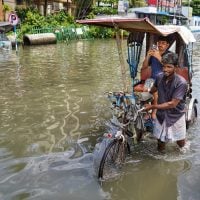In recent years, the global community has increasingly recognized the critical importance of girls’ education as a fundamental human right and a catalyst for sustainable development. Education empowers girls, equipping them with the knowledge and skills necessary to navigate their lives, contribute to their communities, and break the cycle of poverty. However, despite the progress made, millions of girls around the world still face significant barriers to accessing quality education.
This is where grant opportunities come into play, providing essential funding and resources to organizations dedicated to promoting girls’ education. Various international organizations, foundations, and government agencies offer grants specifically aimed at enhancing educational opportunities for girls. These grants not only provide financial support but also foster innovative programs that address the unique challenges faced by girls in different cultural contexts.
By leveraging these opportunities, NGOs can implement impactful initiatives that promote gender equality in education, ultimately leading to a more equitable society. This article will explore several prominent grant opportunities available for organizations focused on girls’ education, highlighting their objectives and how NGOs can effectively apply for them.
The Importance of Breaking Cultural Barriers in Girls’ Education
Cultural barriers often pose significant obstacles to girls’ education, particularly in regions where traditional norms prioritize boys’ education over that of girls. These barriers can manifest in various forms, including early marriage, gender-based violence, and societal expectations that limit girls’ aspirations. To create an environment conducive to learning, it is essential to challenge and dismantle these cultural norms.
This requires a multifaceted approach that involves community engagement, advocacy, and education. One effective strategy is to involve local leaders and influencers in discussions about the value of girls’ education. By fostering dialogue within communities, NGOs can help shift perceptions and encourage families to prioritize their daughters’ education.
Real-world examples abound where grassroots movements have successfully changed attitudes towards girls’ education. For instance, in countries like Bangladesh and Afghanistan, community-led initiatives have empowered parents to recognize the long-term benefits of educating their daughters, leading to increased enrollment rates and improved educational outcomes.
Grant Opportunity: UNESCO Malala Fund for Girls’ Education
The UNESCO Malala Fund for Girls’ Education is a prominent initiative aimed at ensuring that every girl has access to 12 years of free, quality education. Established in honor of Malala Yousafzai, a global advocate for girls’ education, this fund supports projects that address the barriers preventing girls from attending school. The Malala Fund focuses on regions where girls face the greatest challenges, including conflict-affected areas and countries with high rates of child marriage.
Organizations seeking funding from the Malala Fund must demonstrate a clear understanding of the local context and the specific challenges faced by girls in their target areas. Successful applicants often present innovative solutions that engage communities and empower girls themselves. For example, an NGO in Nigeria received funding to implement a mentorship program that connects young women with female role models in various professions.
This initiative not only encourages girls to pursue their education but also helps them envision a future beyond traditional gender roles.
Grant Opportunity: Global Fund for Women’s Empowerment Grants
The Global Fund for Women’s Empowerment Grants is another vital resource for NGOs working to advance girls’ education. This fund aims to support initiatives that promote gender equality and empower women and girls through education and economic opportunities. By providing financial assistance to grassroots organizations, the Global Fund enables them to implement programs that address the unique challenges faced by women and girls in their communities.
One notable example of a successful project funded by the Global Fund is an initiative in Kenya that combines vocational training with educational support for young mothers. This program not only helps young women gain skills necessary for employment but also provides them with access to childcare services, allowing them to continue their education while caring for their children. Such innovative approaches are essential for breaking down barriers and ensuring that all girls have the opportunity to succeed academically.
Grant Opportunity: Girls’ Education Challenge Fund
The Girls’ Education Challenge Fund (GEC) is a UK government initiative designed to support innovative projects that improve educational outcomes for marginalized girls in developing countries. The GEC focuses on addressing the specific barriers that prevent girls from accessing quality education, such as poverty, disability, and conflict. By funding projects that test new approaches and share best practices, the GEC aims to create sustainable change in the education sector.
Organizations applying for GEC funding are encouraged to develop evidence-based proposals that demonstrate a clear understanding of the local context and the needs of marginalized girls. For instance, an NGO in Ethiopia received GEC funding to implement a program that provides scholarships and mentoring for girls from rural areas. This initiative not only alleviates financial burdens but also fosters a supportive network that encourages girls to stay in school and pursue higher education.
Grant Opportunity: The Malala Fund’s Gulmakai Network
The Malala Fund’s Gulmakai Network is a global initiative aimed at supporting local organizations working to promote girls’ education in their communities. This network provides funding, resources, and technical assistance to grassroots organizations that are committed to advocating for girls’ rights and improving educational access. By connecting local NGOs with global partners, the Gulmakai Network amplifies their efforts and enhances their impact.
One inspiring example of a project supported by the Gulmakai Network is an initiative in Pakistan that focuses on providing safe transportation for girls traveling to school. Recognizing that many families are reluctant to send their daughters to school due to safety concerns, this project has successfully increased enrollment rates by ensuring that girls can travel safely. Such targeted interventions are crucial for addressing specific barriers faced by girls in different cultural contexts.
Grant Opportunity: The Global Partnership for Education’s Gender Equality Fund
The Global Partnership for Education (GPE) has established a Gender Equality Fund aimed at addressing the systemic barriers that hinder girls’ access to quality education. This fund supports countries in developing comprehensive strategies to promote gender equality in education systems. By providing financial resources and technical support, GPE empowers governments and NGOs to implement effective policies and programs that prioritize girls’ education.
Organizations seeking funding from the Gender Equality Fund must demonstrate a commitment to collaboration with local governments and stakeholders. For example, an NGO in Mozambique partnered with the government to develop a national strategy focused on increasing female enrollment in secondary schools. Through targeted outreach campaigns and community engagement efforts, this initiative has successfully raised awareness about the importance of educating girls, resulting in significant increases in enrollment rates.
Conclusion and Call to Action for Applying for Grant Opportunities
In conclusion, grant opportunities for girls’ education are essential tools for NGOs striving to create lasting change in their communities. By leveraging these resources, organizations can implement innovative programs that address the unique challenges faced by girls around the world. From breaking cultural barriers to providing targeted support for marginalized populations, these grants enable NGOs to make a meaningful impact on girls’ educational outcomes.
As we move forward, it is crucial for NGOs to actively seek out these grant opportunities and develop compelling proposals that highlight their commitment to promoting girls’ education. By collaborating with local communities, engaging stakeholders, and sharing success stories, organizations can strengthen their applications and increase their chances of securing funding. Together, we can work towards a future where every girl has access to quality education and the opportunity to fulfill her potential.
Let us take action today—apply for these grants and be part of the movement towards gender equality in education!









































